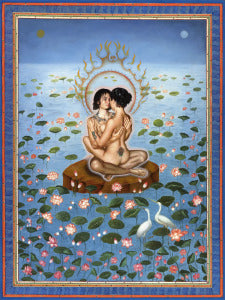What is Tantra?
What is Tantra?
Have you heard about Tantra?

Tantra is the name given by recent scholars to a style of meditation and ritual which arose in India no later than the 5th century AD. Defined as a technique-rich style of spiritual practice, Tantra has no single coherent doctrine; instead, it developed a variety of teachings in connection with the religions adopting the Tantric method. These practices are oriented to the married householder rather than the monastic or solitary renunciant, exhibiting a world-embracing (as opposed to a world-denying) character. Tantra, particularly its nondualforms, rejected the values of Patañjalian yoga; instead, it offered a vision of reality as self-expression of a single, free and blissful divine consciousness under Śiva. Tantra is different from other traditions because it takes the whole person, and his/her worldly desires into account. Other spiritual traditions ordinarily teach that desire for material pleasures and spiritual aspirations are mutually exclusive, setting the stage for an endless internal struggle. Although most people are drawn into spiritual beliefs and practices, they have a natural urge to fulfill their desires. With no way to reconcile these two impulses, they fall prey to guilt and self-condemnation or become hypocritical. Tantra offers an alternative path. What is Tantra Yoga in practice?
- The usage of your mental power for reaching success in sexual Tantra
- How to access and use the subconscious mind on your tantric evolution
- How to build and keep polarity in a successful tantric relationship
- Learning to open up and overcome shyness and inner blockages
- Art of samyama – technique of identification and its use in sexual Tantra
- NLP methods as tools in Tantra
- Tantric visualization and the use of holographic images in Tantra
- Tantric symbol and guided meditations for creating beneficial resonances
- Special Senses Game – an incredible sensual experience for deepening your tantric awareness
- Introduction to tantric massage – the use of energy for creating full body tantric experiences

